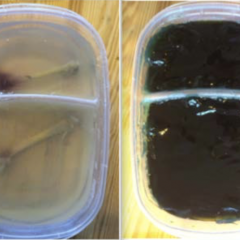Emergency Surgical Airway Model for Procedural Skills Simulation
ABSTRACT
Audience:
Emergency medicine medical students, interns, residents, fellows and attending physicians.
Introduction:
Most residents graduate residency without having the opportunity to perform emergency cricothyrotomy in a real failed airway scenario. Simulation training is therefore often utilized to fulfill residents’ procedural education. Animal tracheas are common models, but there is difficulty maintaining the unattached trachea in appropriate alignment and exposure. This manuscript outlines the materials and steps to reproduce a realistic, reusable cricothyrotomy simulation model and utilize it in training.
Objectives:
At the end of this educational session, learners will be able to: 1) practice the manual and cognitive skills necessary to perform a successful and rapid surgical cricothyrotomy, and 2) successfully complete a cricothyrotomy within a time frame of 90 seconds.
Methods:
Supplies from a local hardware store plus beginner woodworking skills and tools were used to build a pig trachea holding device. This simulation model has been used by the site’s emergency medicine residents as a tool for procedural airway training since 2011. The inexpensive, reusable surgical airway model using a pig trachea holder and cadaveric skin is a useful, high fidelity procedural training tool. It has successfully fulfilled trainees’ need to practice this rare but potentially life-saving procedure.
Topics:
Cricothyrotomy, failed airway, simulation training.

